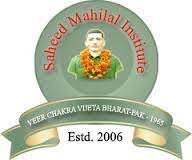Learn about the eligibility criteria and fee structure for the Diploma in Yoga course, making your journey to become a certified yoga practitioner accessible.
Eligibility & Fee Structure for Diploma in Yoga Course
A Diploma in Yoga is a specialized program designed to provide individuals with a comprehensive understanding of yoga philosophy, practice, and teaching. Yoga has gained immense popularity worldwide for its physical, mental, and spiritual benefits. If you're interested in pursuing a career in yoga instruction, or therapy, or simply want to deepen your yoga practice, it's important to understand the eligibility criteria for admission and the associated fee structure for a Diploma in Yoga program. This comprehensive guide will provide you with insights into the eligibility requirements and financial considerations for prospective yoga enthusiasts and aspiring yoga instructors.
Diploma in Yoga Eligibility Criteria
To be eligible for admission into a Diploma in Yoga program, candidates must meet specific eligibility criteria. While the exact requirements may vary from one institution or yoga school to another, there are common eligibility criteria that most programs share. Here are the key factors to consider.
Educational Qualifications: Candidates should have completed their high school education or its equivalent from a recognized board or educational institution. Typically, a high school diploma or equivalent is required. However, some programs may accept candidates with different educational backgrounds.
Age Limit: Many Diploma in Yoga programs do not have strict age limits, but candidates should generally be at least 18 years old to ensure maturity and readiness for the program.
Prior Yoga Experience: Some programs may require candidates to have a certain level of prior yoga experience or practice. This may include a minimum number of years of yoga practice or a specific proficiency in yoga postures and meditation techniques.
Physical Fitness: As yoga involves physical practice, candidates should be in reasonably good physical health. Some programs may require candidates to provide a medical certificate or undergo a physical fitness assessment.
Interview or Entrance Test (if applicable): In some institutions or yoga schools, candidates may be required to attend an interview or take an entrance test to assess their knowledge of yoga and their commitment to the program.
Language Proficiency (if applicable): Proficiency in the language of instruction is essential. Candidates may need to demonstrate their language proficiency through standardized tests or interviews, especially if they are non-native speakers.
Letters of Recommendation (if applicable): Some institutions or schools may require candidates to submit letters of recommendation from yoga instructors or mentors who can vouch for the candidate's dedication to yoga practice and their suitability for the program.
Statement of Purpose (SOP): While not always mandatory, some Diploma in Yoga programs may ask candidates to submit a Statement of Purpose as part of their application. In the SOP, candidates can articulate their motivations for pursuing a Diploma in Yoga, their specific interests in yoga, and how the program aligns with their career or personal goals.
Fee Structure for Diploma in Yoga Programs
Understanding the fee structure is crucial for prospective students to plan for the financial aspects of their Diploma in Yoga education. The fee structure for these programs can vary widely based on several factors, including the institution, location, program duration, and level of accreditation. Here are the key components of the fee structure.
Tuition Fees: Tuition fees are a significant portion of the overall cost and cover the cost of instruction, access to yoga studios and equipment, faculty expertise, and academic resources. The amount of tuition varies based on the institution or yoga school and the specific program being offered.
Registration Fees: Most institutions or yoga schools charge a one-time or annual registration fee, which covers administrative expenses related to enrollment.
Study Materials: Students may need to purchase textbooks, study guides, or course materials related to yoga philosophy, practice, and teaching. Some programs include study materials as part of the tuition fees.
Yoga Equipment: Depending on the program, students may need to invest in yoga mats, props, and clothing suitable for yoga practice. Some institutions provide these items as part of the program.
Examination Fees: Some programs require students to pay examination fees for assessments, practical exams, or certifications.
Yoga Retreats or Workshops (if applicable): Some Diploma in Yoga programs include optional or mandatory retreats or workshops, which may incur additional fees for accommodation, meals, and transportation.
Professional Membership: Graduates may choose to become members of yoga associations or organizations, which may require membership dues.
Travel Expenses (if applicable): If the program includes travel to yoga retreats or workshops, students should budget for travel expenses such as airfare, transportation, and accommodations.
Yoga Teacher Certification (if applicable): Some programs offer yoga teacher certification as part of the diploma program. Candidates may need to pay additional fees for certification exams or assessments.
Living Expenses: While not part of the official fee structure, students must budget for accommodation, food, transportation, and personal expenses. The cost of living can vary significantly depending on the location of the institution or yoga school.
Financial Aid and Scholarships
Prospective Diploma in Yoga students should explore various financial aid options and scholarship opportunities to help offset the cost of their education. Some of these options include.
Scholarships: Some yoga institutions or organizations offer scholarships or grants to deserving and dedicated students pursuing yoga education. These scholarships may be based on financial need, academic excellence, or commitment to the practice of yoga.
Financial Assistance Programs: Some institutions or yoga schools may offer financial assistance or payment plans to help students manage the cost of their diploma program. This may include deferred payment options or instalment plans.
Part-Time Work: Students may explore part-time job opportunities within the institution or in the local community to supplement their income and cover living expenses.
External Scholarships: There are external scholarships and grants available from yoga organizations, foundations, and other sources. These scholarships may be competitive, so students should research and apply for them well in advance.
 1 Years
1 Years
 Diploma
Diploma
 Science
Science
 Full Time
Full Time





















 back
back

